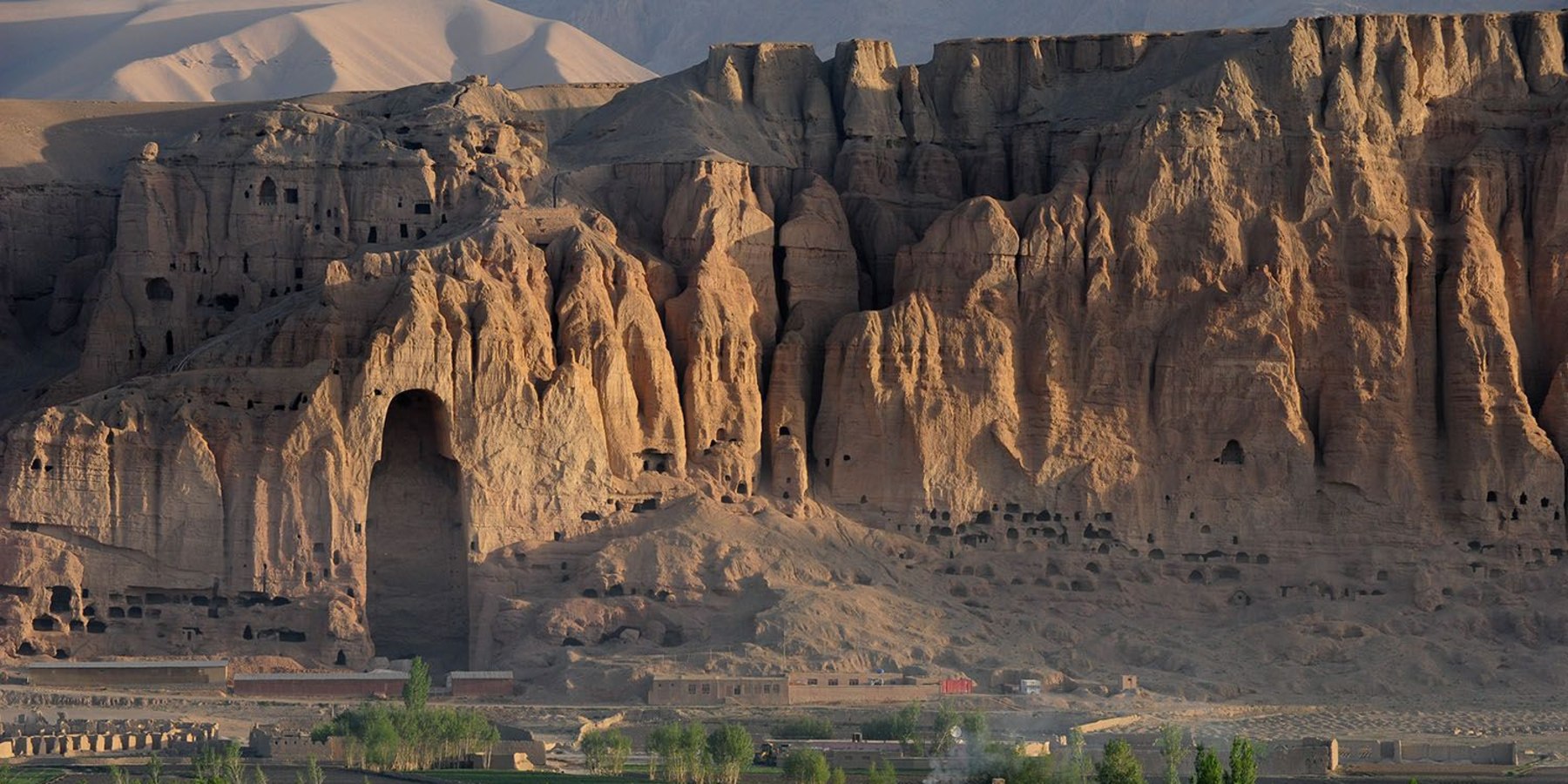
Its population of approximately 70,000 people makes it the largest city in Hazarajat.
Bamyan is at an altitude of about 8,366 feet (2,550 m) above sea level. The Bamyan Airport is located in the middle of the city. The driving distance between Bamyan and Kabul in the southeast is approximately 180 kilometres (110 mi).
The Band-e-Amir National Park is to the west, about a three-hour drive from the city of Bamyan.
Bamyan is referred to by some as the "Shining Light" and "Valley of Gods. There are several tourist attractions near the city, including the Buddhas of Bamyan, which were carved into cliffs on the north side of Bamyan city in the 6th and 7th century CE, dating to the Hephthalite rule.
Other attractions close to the city include Shahr-e Gholghola and Zuhak. In 2008, Bamyan was found to be the home of the world's oldest oil paintings.
At the end of the 10th century, there was a Buddhist culture in which several thousand Buddhist monks lived in caves carved into the mountains. The 53 meters known as the Salsal and the 35 meters known as Shahmama are the high-standing Buddha statues and best-known monuments left by the Buddhists, which were destroyed by the Taliban in 2001. Furthermore, there are several cultural sites left from both the Buddhist and the later Islamic eras of the valley. After the overthrow of the Taliban from power in 2002, considerable efforts were made to preserve the cultural monuments in the valley. The city of Bamyan has four districts and a total land area of 3,539 hectares. The total number of dwellings in this city is 4,435.
The Bamyan valley marked the most westerly point of Buddhist expansion and was a crucial hub of trade for much of the second millennium CE. It was a place where East met West, and its archaeology reveals a blend of Greek, Turkic, Persian, Chinese, and Indian influences. The valley is one of Afghanistan's most touristic places.

